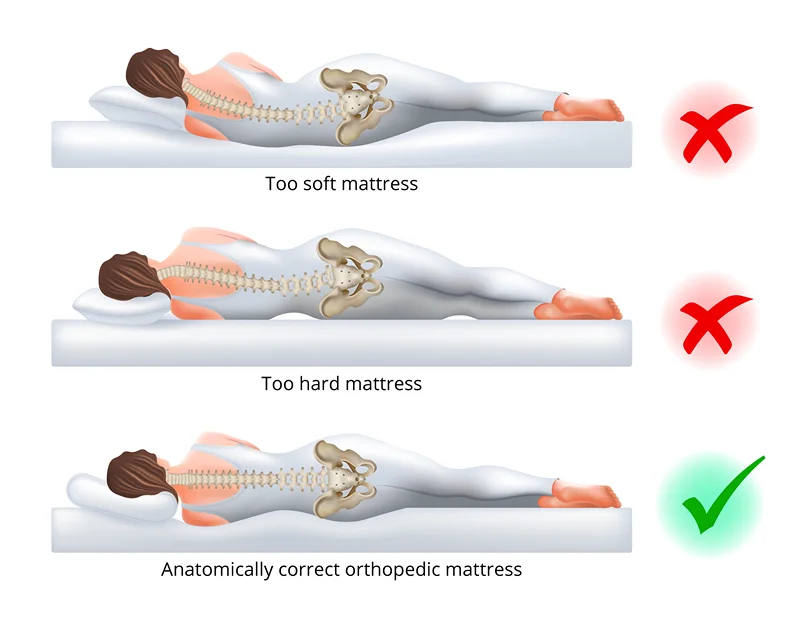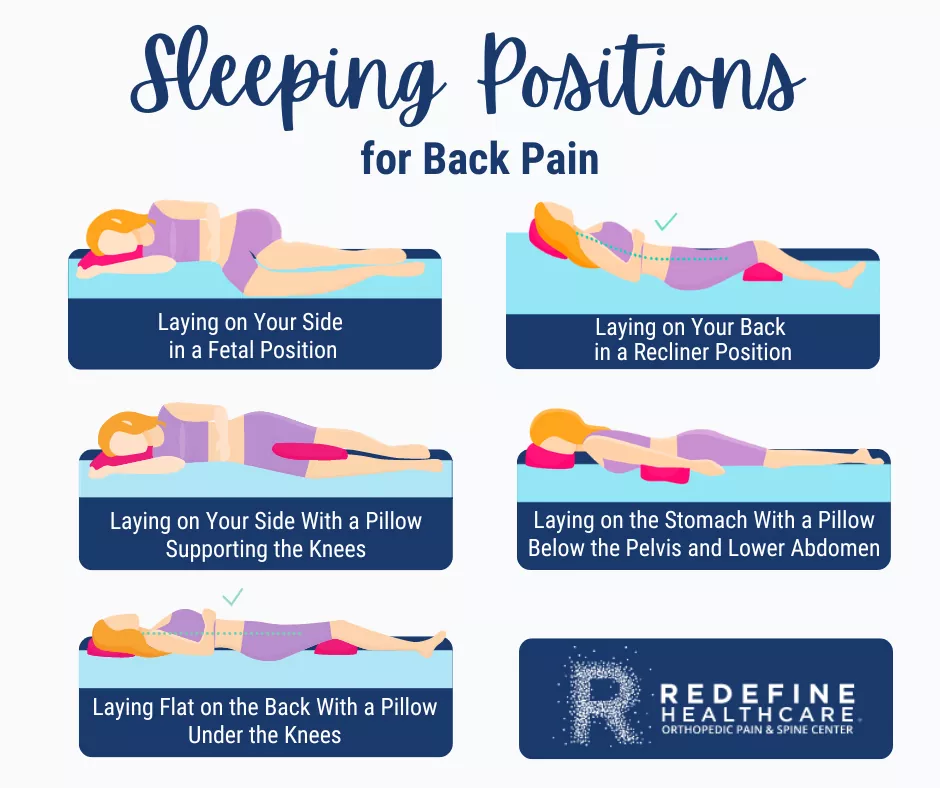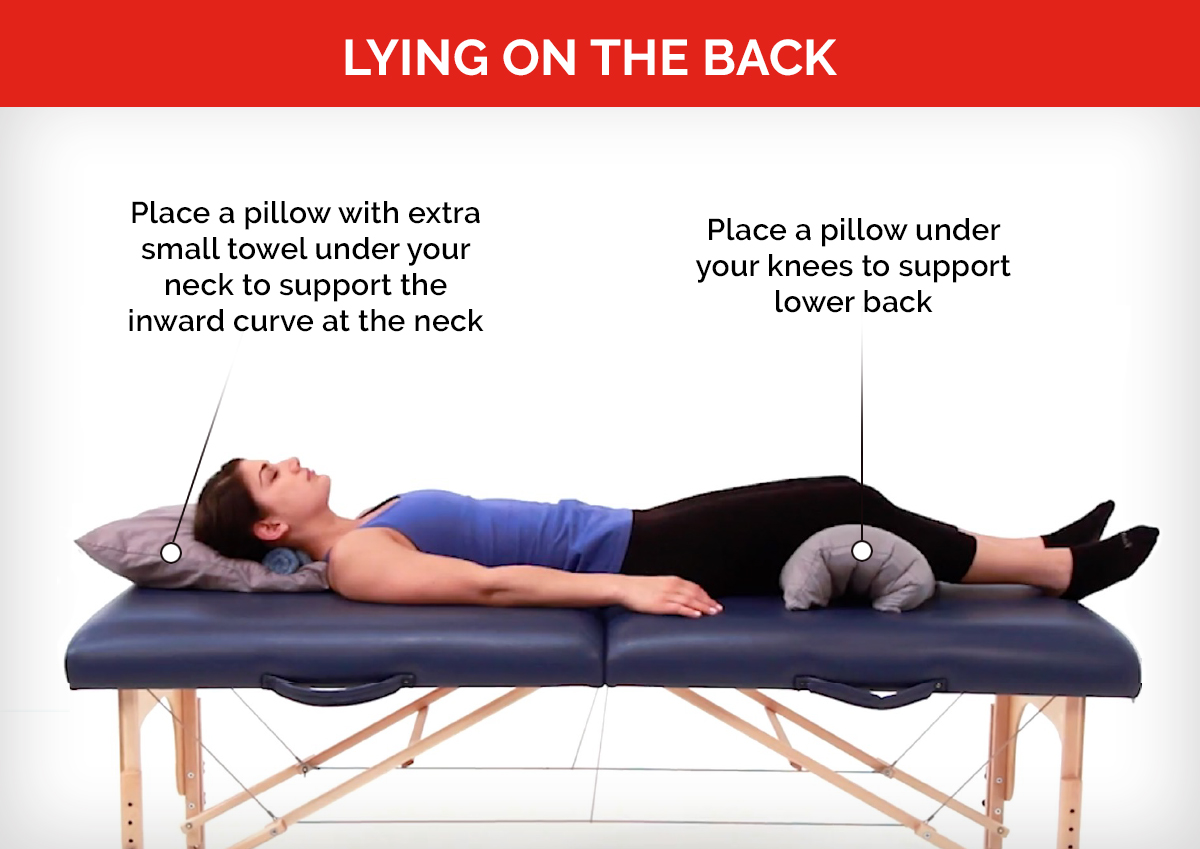Back Pain While Sleeping: Proven Tips for a Pain-Free Night
Back pain while sleeping affects many people. It can disrupt rest and impact daily life.
Imagine waking up every morning with an aching back. It’s frustrating and tiring. Sleep should be restful, but for many, it becomes a time of discomfort. Understanding why back pain happens at night can help find solutions. It might be your mattress, sleep position, or even underlying health issues.
This blog will explore common causes and offer practical tips for relief. So, if you’re tired of waking up sore, keep reading. Discover ways to ease your back pain and enjoy a good night’s sleep.
Causes of Nocturnal Back Pain
Back pain while sleeping at night can arise from numerous factors, from your regular sleeping position to an underlying medical condition. Here are some reasons you might be experiencing back pain.
1. Sleeping Positions
Unsupportive sleep positions are among the biggest culprits of back pain, as they put immense pressure on your spine. For instance, sleeping on your stomach makes it easier to twist your neck out of alignment with the rest of your spine. Your lower abdomen could also sink deeper than the rest of your spine and misalign your back, depending on your mattress’s firmness.
2. Bad Mattress
While a proper sleeping position is important, it’s only as good as the mattress beneath it. Experts recommend replacing your mattress every 6-8 years or whenever you notice the following characteristics:
- Your mattress appears saggy and damaged.
- Your matress negatively affects your sleep.
- Your mattress makes more noise than usual.
- You sleep better in other environments.
- You consistently wake up with joint or muscle stiffness.
- You notice an increase in allergies or asthma.
If you’re regularly sleeping on an old, unsupported mattress, it could be contributing to your back pain. Even a newer mattress can lead to back discomfort if it’s too soft or firm to support your sleeping position.
3. Pregnancy
Back pain is common during pregnancy. It’s estimated that over half of all pregnant women experience some level of back discomfort. During pregnancy, your ligaments stretch and soften naturally to prepare you for labor. This process can strain the joints in your pelvis and lower back, causing pain.
Other factors like changes in the center of gravity, hormones and posture can also evoke discomfort. As your uterus expands and becomes heavier, it alters your center of gravity, making it more of a challenge to maintain balance.
Weakened stomach muscles and the weight of the baby can pull your lower spine forward, straining the back muscles further. This can trigger an awkward leaning-back posture, elevating pain and strain.
Regular stretching and applying a warm compress on your back can provide pain relief during pregnancy. Medical professionals recommend sleeping on the left side with your knees bent, as it helps reduce discomfort.
You can also place pillows between your legs, below your abdomen and against the small of your back to relieve back pain when lying down. Back discomfort tends to subside naturally after childbirth.
Choosing The Right Mattress
Back pain while sleeping can disrupt your rest and affect your day. Choosing the right mattress can make a significant difference. The right mattress supports your spine and offers comfort. Let’s explore the types of mattresses and their firmness to help you make an informed decision.
Types Of Mattresses
There are various types of mattresses to consider. Each type offers different benefits.
Memory Foam: Memory foam mattresses conform to your body. They provide excellent support and reduce pressure points. They are good for people who sleep on their side.
Innerspring: Innerspring mattresses have coils that provide support. They offer a bouncy feel. They are suitable for those who prefer a firmer mattress.
Latex: Latex mattresses are made from natural or synthetic rubber. They are firm and bouncy. They provide good support for the back.
Hybrid: Hybrid mattresses combine memory foam and innerspring. They offer the benefits of both types. They provide support and comfort.
Mattress Firmness
Mattress firmness is crucial for comfort and support. The level of firmness you need depends on your sleeping position and preference.
Soft: Soft mattresses are good for side sleepers. They cushion the shoulders and hips. They help maintain spine alignment.
Medium: Medium firmness suits most people. It provides a balance of support and comfort. It’s ideal for back and combination sleepers.
Firm: Firm mattresses are best for stomach sleepers. They keep the spine in a neutral position. They prevent the lower back from sinking.
Best Mattresses for Upper and Lower Back Pain
- Nectar – Best Overall Mattress for Back Pain
- Saatva – Best Innerspring Mattress for Back Pain
- DreamCloud – Best Mattress for Back Sleepers With Back Pain
- Helix Midnight Luxe With ErgoAlign Layer – Best Mattress for Combination Sleepers With Back Pain
- WinkBed – Best Cooling Mattress for Back Pain
- Saatva Rx – Best Mattress for Side Sleepers With Back Pain
- Bear Elite Hybrid – Best Hybrid Mattress for Back Pain
- Silk & Snow Hybrid – Best Mattress for Couples With Back Pain
- Nolah Evolution – Best Luxury Mattress for Back Pain
- Brooklyn Bedding Signature Hybrid – Best Cheap Mattress for Back Pain
- Plank Firm Luxe – Best Firm Mattress for Back Pain
- Titan Plus – Best Mattress for Heavy Sleepers With Back Pain
When it comes to finding the best mattress for heavy people, there are several important factors to consider, as these sleepers put more pressure on a bed’s layers than lightweight or average weight sleepers.
Optimal Sleep Positions
Back pain while sleeping can be a nightmare. The good news is that the right sleep position can offer relief. Understanding the optimal sleep positions can help. Let’s explore the best options.
Side Sleeping
Side sleeping is a popular choice. It’s easier on the back and can help reduce pain. But there are ways to improve it.
- Use a firm pillow to support your neck.
- Place a pillow between your knees. This keeps your spine aligned.
This position is ideal for reducing back pain. It also helps with breathing issues.
Back Sleeping
Back sleeping is another good option. It keeps the spine in a neutral position. This can reduce back pain.
To make it even better:
- Use a supportive pillow under your head.
- Place a pillow under your knees. This relieves pressure on the spine.
Back sleeping can also prevent neck pain. It’s a win-win.
| Position | Benefits |
|---|---|
| Side Sleeping | Reduces back pain, Helps with breathing |
| Back Sleeping | Keeps spine neutral, Reduces neck pain |
Choosing the right position can change your sleep. Try these tips for a pain-free night.
Supportive Pillows
Supportive pillows play a crucial role in reducing back pain while sleeping. The right pillow can make a significant difference in your sleep quality and comfort. Choosing the correct pillow can help align your spine and provide the necessary support to your neck and back.
Pillow Types
There are various types of pillows designed to offer support and comfort. Memory foam pillows contour to the shape of your head and neck. These pillows provide consistent support throughout the night. Latex pillows are another good option. They offer firm support and are also hypoallergenic. Feather pillows are softer and can be adjusted to fit your preferred shape. Wedge pillows elevate parts of your body, which can help reduce back pain.
Proper Pillow Placement
Proper pillow placement can greatly improve your sleep posture. Place a pillow under your knees if you sleep on your back. This helps maintain the natural curve of your spine. For side sleepers, place a pillow between your knees. This keeps your hips, pelvis, and spine aligned. If you sleep on your stomach, use a thin pillow or no pillow at all. This minimizes strain on your lower back and neck.
Creating A Comfortable Sleep Environment
Back pain while sleeping can be a real struggle. Creating a comfortable sleep environment is essential to reduce discomfort and ensure a restful night. By focusing on key elements like temperature control, noise reduction, and more, you can significantly improve your sleep quality and alleviate back pain.
Temperature Control
Maintaining the right temperature in your bedroom is crucial. Too hot or too cold can disrupt your sleep and worsen back pain. Aim for a room temperature between 60-67°F (15-19°C) for optimal comfort.
Use breathable bedding materials. They help regulate body temperature. Cotton or bamboo sheets are excellent choices.
| Material | Benefits |
|---|---|
| Cotton | Breathable, soft, and comfortable |
| Bamboo | Moisture-wicking and hypoallergenic |
Noise Reduction
Noise can significantly impact your sleep quality. A quiet environment promotes deeper sleep and reduces back pain.
- Use earplugs if necessary.
- Consider a white noise machine to mask disruptive sounds.
- Ensure your windows and doors are well-sealed to block external noise.
Soft, calming music can also aid relaxation. Choose instrumental tracks without lyrics for best results.

Pre-sleep Stretches And Exercises
Ease back pain while sleeping with gentle pre-sleep stretches and exercises. Relax muscles and improve spinal alignment. Enjoy a restful night’s sleep.
Many people experience back pain while sleeping. Pre-sleep stretches and exercises can help. These routines can ease tension and improve sleep quality. Let’s explore some gentle stretches and strengthening exercises.
Gentle Stretching Routines
Gentle stretching can relieve muscle tightness. It can also increase flexibility. Start with a simple forward bend. Stand tall. Slowly bend forward, reaching for your toes. Hold for 15-30 seconds. Breathe deeply. Another effective stretch is the child’s pose. Kneel on the floor. Sit back on your heels. Stretch your arms forward and rest your forehead on the ground. Hold this position for a minute. Relax and breathe. The cat-cow stretch is also beneficial. Get on your hands and knees. Arch your back up like a cat. Then, dip your back down and lift your head. Repeat this movement 10 times. This stretch helps to loosen your spine.
Strengthening Exercises
Strengthening exercises can support your back muscles. One simple exercise is the bridge. Lie on your back with your knees bent. Lift your hips towards the ceiling. Hold for a few seconds, then lower down. Repeat 10 times. Another useful exercise is the plank. Lie face down. Lift your body onto your toes and forearms. Keep your body straight. Hold this position for 15-30 seconds. This exercise strengthens your core. Finally, try the bird-dog exercise. Kneel on all fours. Extend one arm forward and the opposite leg back. Keep your back straight. Hold for a few seconds, then switch sides. Repeat 10 times on each side. Incorporating these routines can help reduce back pain. Make them a part of your nightly routine. Your back will thank you. “`
Lifestyle Modifications
Back pain while sleeping can disrupt your night and affect your day. Making simple lifestyle modifications can help. These changes can ease discomfort and improve sleep quality.
Maintaining A Healthy Weight
Carrying extra weight can strain your back. This extra pressure can lead to pain, especially at night. Keeping a healthy weight helps reduce this strain.
Here’s how to manage your weight effectively:
- Balanced Diet: Eat a variety of foods. Include fruits, vegetables, lean proteins, and whole grains.
- Portion Control: Avoid overeating. Use smaller plates to help with portion sizes.
- Hydration: Drink plenty of water. This helps your body function better.
Maintaining a healthy weight is a long-term commitment. Small, consistent changes can make a big difference.
Regular Physical Activity
Regular exercise strengthens your back and core muscles. This support can reduce back pain while sleeping. Aim for at least 30 minutes of moderate activity most days.
Consider these exercises:
- Walking: A simple, low-impact exercise. It improves circulation and helps with weight management.
- Swimming: Water supports your body. This reduces stress on your back while providing a full-body workout.
- Yoga: Gentle stretching and strengthening. This can improve flexibility and relieve tension.
Remember to start slowly. Gradually increase the intensity as your body adapts. Consistency is key.

When To Seek Professional Help
Experiencing back pain while sleeping can be troubling. It affects your rest and daily life. But not all back pain requires a doctor. Knowing when to seek professional help is crucial.
Signs Of Serious Conditions
Some signs suggest that your back pain may be serious. Here are a few to watch for:
- Severe pain that doesn’t improve with rest
- Pain that radiates down your legs
- Numbness or tingling in your arms or legs
- Unexplained weight loss
- Fever along with back pain
If you notice any of these symptoms, it might indicate a more serious condition. It could be a sign of nerve damage or infection. Seeking professional help becomes essential in these cases.
Consulting A Specialist
When you decide to consult a specialist, you have several options. Here are the steps you can take:
- Start with your primary care physician
- They may refer you to a specialist such as an orthopedist
- Consider seeing a chiropractor for non-invasive treatment
- In some cases, a neurologist might be needed
Your primary care physician will help you understand your options. They can guide you to the right specialist based on your symptoms.
Consulting a specialist ensures you get the right diagnosis. They can provide targeted treatments to alleviate your back pain. This can significantly improve your sleep quality.
Remember, early intervention can prevent further complications. Don’t wait too long to seek help if your symptoms persist.

Frequently Asked Questions
Why Does My Back Hurt While Sleeping?
Back pain during sleep can result from poor mattress support, incorrect sleeping positions, or underlying medical conditions.
What Is The Best Sleeping Position For Back Pain?
Sleeping on your back with a pillow under your knees can help reduce back pain.
Can A Mattress Cause Back Pain?
Yes, an unsupportive or old mattress can contribute to back pain while sleeping.
How Can I Prevent Back Pain When Sleeping?
Use a supportive mattress, maintain proper sleeping posture, and consider using pillows for added support.
Conclusion
Finding relief from back pain while sleeping is possible. Try different sleeping positions. Use supportive pillows and mattresses. Practice good sleep hygiene. Stretch before bed. Consult a doctor if pain persists. Sleeping well is vital for overall health. Simple changes can make a big difference.
Prioritize your comfort and rest. A good night’s sleep leads to better days. Make sleep a priority for a healthier back.
Emma Caldwell is a certified sleep consultant with over 8 years of experience studying how environment, posture, and bedding affect sleep quality. At Royal Comport, she leads content focused on mattress reviews, sleep hygiene, and wellness optimization. Her mission is to help readers find science-backed comfort solutions that improve both rest and daily performance. Her Expertise is Sleep science, mattress testing, comfort ergonomics, lifestyle wellness.